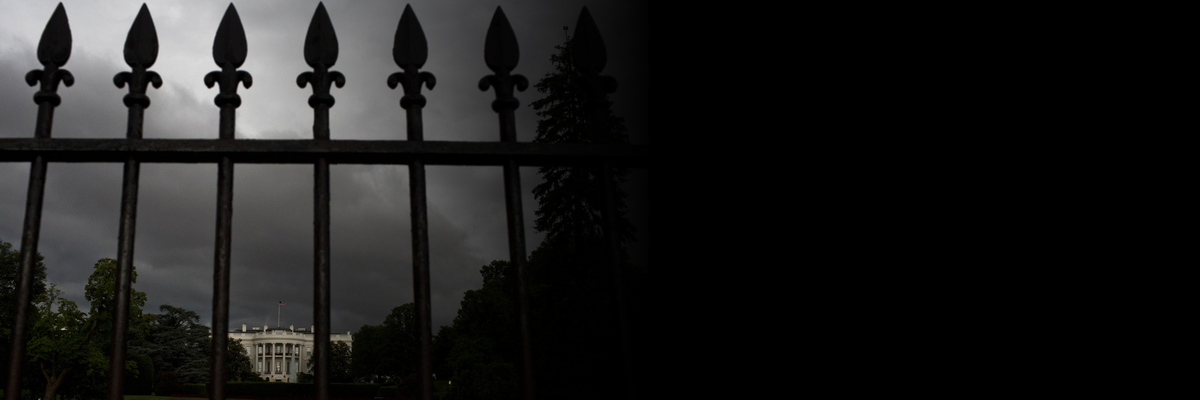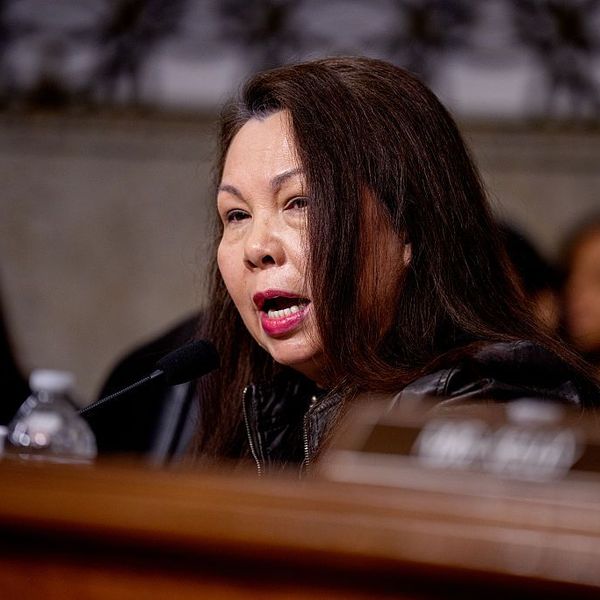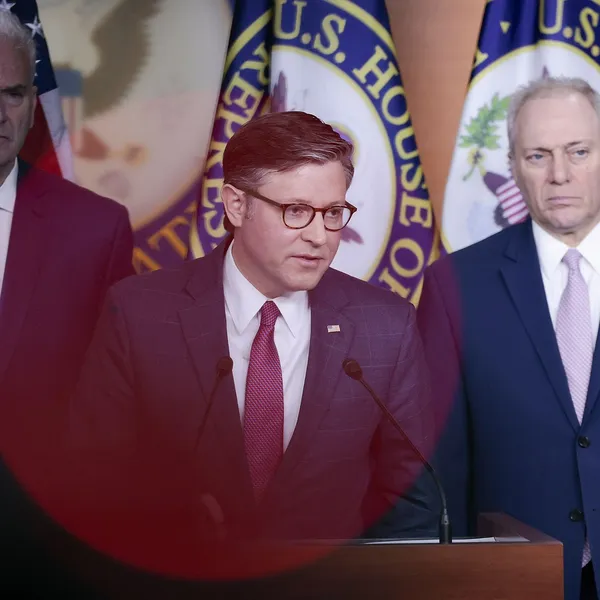Clarence Thomas’s corruption has recently received attention from the mainstream media. As readers probably now know, he’s flown off on a half million dollar vacation to Indonesia luxuriating on a private jet and yacht paid for by Republican billionaire Harlan Crow, smoked cigars (smuggled Cubans?) at one of Crow’s private luxury resorts with Federalist Society guru Leonard Leo, allowed Leo to secretly pay his MAGA wife tens of thousands of dollars, sold a house he inherited to Crow who lets his mother live there rent free, and concealed Crow paying hundreds of thousands of dollars in elite boarding school tuition for his dependent nephew.
What the mainstream media has paid less attention to are the actual results of Thomas’ corruption and its impact on ordinary people’s lives. He has signed and sometimes authored Supreme Court decisions that could lead to the mass shooting of innocent children, force girls and women to bear children whether they want to or not, let corporations destroy the environment without regulation, and allowed corporations and billionaires to buy the government including the Supreme Court itself.
The Deadly Impact of Thomas' Gun Rights Opinion
Hardly a day or a week goes by without another mass shooting. But the opinion authored by Thomas (and joined by the other five extreme right-wing justices) in New York Rifle and Pistol Association v. Bruen (2022) has made most commons sense gun control regulations illegal and will lead to more people being killed and maimed by weapons of war that have no business in the hands of civilians. It also imposed a cramped, extremist version of right-wing “originalism” on Supreme Court interpretation.
As I recently wrote, in only the past year, lower federal courts have quickly followed the precedent of Thomas’s Bruen opinion to hold that:
- A spousal abuser has a constitutional right to gun ownership, since "Our ancestors who wrote the laws [i.e white men] would never have accepted such restrictions." (After all, wife beating was pretty socially acceptable in 1791 and women were then subordinate to their husbands.)
- A long-standing federal law prohibiting people from possessing firearms with serial numbers shaved off is unconstitutional since, per the Thomas’ legal rationale, serial numbers are not part of the "historical tradition of gun ownership." (Serial numbers didn't come into wide use until the late 19th century.)
- It is unconstitutional to prevent 18 to 20-year-olds from owning guns.
- It's unconstitutional to prevent someone under indictment for a felony from buying a gun.
- It's unconstitutional to ban carrying guns in summer camps, airports, Times Square, bars, cannabis dispensaries, theaters, stadiums, amusement parks, libraries, playgrounds, childcare programs, places serving individuals with developmental disabilities, homeless and family shelters, domestic violence shelters, and more. (Apparently there's no historical analogy since guns weren't banned from airports in 1791 or 1867.)
- It is unconstitutional to ban carrying guns in houses of worship since there is not a sufficient historical record that houses of worship are “sensitive places.”
In short, standing on the shoulders of Thomas’ Bruen opinion, it is now unconstitutional to prevent an 18-year-old spousal abuser under indictment for a violent felony from packing heat with its serial number shaved off at a domestic violence center. Really?
Thank you Clarence Thomas (and the five right-wing Justices who signed his Bruen opinion) for likely getting innocent people killed and for millions of children and their parents to fear that their lives will be endangered by mass shooters when they go to school every day.
Thomas' Nutty Gun Opinion
Thomas’ Bruen opinion was an extension and amplification of Antonin Scalia’s 5-4 opinion in 2008 in District of Columbia v. Heller which held for the first time since 1789 that the 2nd Amendment protects an individual’s right to keep and bear arms for purposes like self-defense in the home (even striking down the requirement that such guns be “unloaded and disassembled or bound by a trigger lock”).
For the record, the text of the 2nd Amendment reads: “A well regulated Militia, being necessary to the security of a free State, the right of the people to keep and bear Arms, shall not be infringed.” Supreme textualist Scalia disregarded the actual text’s first clause about a “well regulated militia” as merely prefatory and decided that only the text of the second clause about “the right of the people to keep and bear Arms” is operative. (In a supreme historical irony, Scalia died of a heart attack having just flown on a private jet to a hunting trip on a Texas ranch attended by 35 wealthy gun lovers who liked to dress up as medieval German hunters.)
Following Thomas’ Bruen opinion, it’s no longer enough for the government to show that a gun control law protects an important interest or society like preventing school children being shot by an unhinged mass murderer.
But even Scalia’s Heller opinion held that "Like most rights, the right secured by the Second Amendment is not unlimited. [It is] not a right to keep and carry any weapon whatsoever in any manner whatsoever and for whatever purpose." According to Scalia's opinion, examples of rights the 2nd Amendment does not protect include firearm possession by dangerous people, firearm possession in sensitive places such as schools and government buildings and conditions on the commercial sale of firearms. (It has been speculated that Scalia did not really believe in these exceptions but only included them in his Opinion to garner center-right Justice Kennedy as the fifth and deciding voted needed for a majority opinion.)
After Heller, most lower courts followed a two-step test to decide if a gun control regulation is constitutional: First, whether the regulated conduct was protected by the 2nd Amendment and second, whether the state's justifications for the law outweighed the burden of the law on citizens' 2nd Amendment rights. This is very similar to the balancing test courts use to decide 1st Amendment cases. Under this approach, from 2008-2022 lower courts upheld many gun control laws.
Thomas' majority opinion in Bruen gutted the second step entirely, holding that "[W]hen the Second Amendment's plain text covers an individual's conduct, the Constitution presumptively protects that conduct. The government must then justify its regulation by demonstrating that it is consistent with the nation's historical tradition of firearm regulation."
In other words, following Thomas’ Bruen opinion, it’s no longer enough for the government to show that a gun control law protects an important interest or society like preventing school children being shot by an unhinged mass murderer. Such gun control is presumed unconstitutional unless the government can show that there are a sufficient number of analogous laws from before 1791 or 1867. Some lower courts have even found that there must be at least three such laws.
To meet Thomas’ requirement, one Federal judge actually raised the possibility of the court appointing a historian to advise the court, saying “This court is not a trained historian. The Justices of the Supreme Court…are not trained historians…And we are not experts in what white, wealthy and male property owners thought about firearms regulations in 1791. Yet we are now expected to play historian in the name of constitutional adjudication.”
Thomas has written into judicial decision-making a cramped and extremist version of “originalism” which until recently posited that constitutional provisions must be interpreted according to the public meaning at the time they were written. This originalist theory is already reverse-engineered to likely produce reactionary decisions. But Thomas takes it beyond even Alito’s decision overturning Roe v. Wade.
Scalia was asked what the difference was between himself and Thomas and answered, “I’m an originalist and a textualist, not a nut.”
But nuttiness has now been enshrined into the Constitution by Thomas and the five other extremist Republican justices who signed onto his Bruen opinion.
Thomas Likely Broke the Law
Thomas is likely a law breaker himself. In a letter demanding Thomas’ resignation, the non-partisan Citizens for Responsibility and Ethics in Washington (CREW) wrote, “Your conduct has likely violated civil and criminal laws and has created the impression that access to and influence over Supreme Court justices is for sale.” CREW has demanded that Attorney General Garland and Chief Justice Roberts commence an investigation of whether Thomas broke the law.
But it’s politically unlikely that Roberts and Garland will fulfill these obligations. Roberts has already been clear that he’s not troubled by Thomas’ gifts from billionaire Crow. Garland is likely too politically timid to investigate a Supreme Court Justice.
So, for the moment, we’re stuck with a 6-3 extreme right-wing SCOTUS majority. The “nut” Thomas will likely remain on the Court for as long as he’s alive or until his health gets so bad that he resigns. The same goes for the five other extreme right-wing Republican-appointed Justices. They could go on for decades more overturning gun control laws, denying women the right to control their bodies, destroying democracy by allowing voter suppression and extreme gerrymandering, blocking environmental regulations, and even finding that most government regulation of business is unconstitutional.
Unpack the Supreme Court—Add Four Justices
The only solution may be to unpack the Supreme Court by adding more justices. The current right-wing SCOTUS majority is made up of Justices appointed by Republican presidents who won a minority of the popular vote and confirmed by a Senate that represents substantially less than a majority of voters.
Congress can increase the number of Supreme Court justices by a simple majority vote according to Article III, Section 1 of the Constitution. Historically, Congress has changed the number of justices seven times.
A number of House members and Senators have proposed the Judiciary Act of 2023 which would add four new Justices to the U.S. Supreme Court. It has been endorsed by over 60 members of Congress and numerous social action organizations. As one of those organizations, Demand Justice, has said, “To undo the damage Republicans did by stealing multiple Supreme Court seats, we should immediately add seats to the Supreme Court and appoint justices who will restore balance.”
Congress can increase the number of Supreme Court justices by a simple majority vote according to Article III, Section 1 of the Constitution. Historically, Congress has changed the number of justices seven times.
A recent Gallup poll found that 58% of Americans disapprove of the job the Supreme Court is doing in September 2022, while only 40% approve. The 40% approval ties the lowest reading in Gallup's trend, while the 58% disapproval is the highest such reading. The disapproval number has been steadily increasing in recent years.
When the Supreme Court likely hands down rulings in the near future overturning student debt relief and affirmative action and possibly approving more gerrymandering, the public disapproval rating is likely to go even higher.
Now is the time to put expanding the Court front and center on the political agenda going into next year’s elections.
As Sen.
Elizabeth Warren wrote in a
Boston Globe op-ed, “Engraved on the entrance of the Supreme Court is a simple phrase: ‘equal justice under law.’ Americans deserve a court committed to that fundamental idea. One that values the settled constitutional rights of every American. One that protects democracy, instead of undermining it. One that gives working parents and millionaire executives the same fair shake. This extremist court has shown that it is not interested in advancing the equal administration of justice. It’s time to rebalance the Supreme Court to create one that is.”



